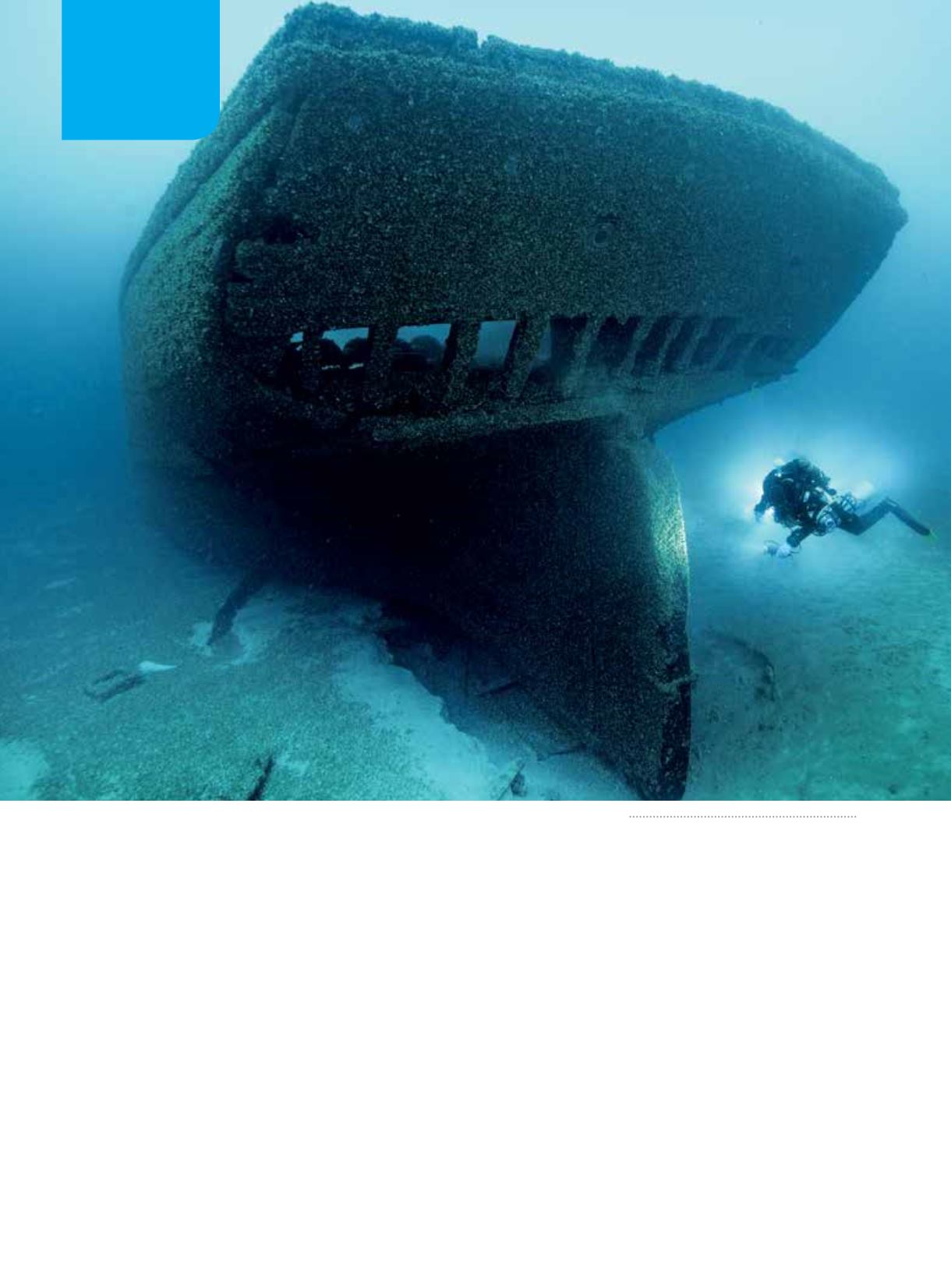

M
y first dive in the Great Lakes
was 20 years ago. I remember
vividly the descent into dark
green water.
Soon after that dive I moved
to Florida with my family and
forgot all about the Great Lakes because I had warm
water and tropical reefs in my backyard. Fast-forward
to five years ago and my next Great Lakes experience: I
was blown away by the pristine state of the wrecks I saw
in Lake Superior. This ignited in me a new passion for
Great Lakes diving. Not long afterward I was fortunate
enough to work on a documentary in Lake Huron,
where we located and explored several new wrecks. I
was surprised by how blue and clear the water was.
The unfortunate introduction of invasive quagga
mussels has improved the water clarity dramatically in
many of the lakes. They now cover the wrecks in four
out of five of the Great Lakes, but visibility can be 100
feet or more. The water looks Caribbean blue on most
days, and the lakes are no longer as dark and murky as
they once were.
The Great Lakes have quickly become my personal
favorite dive destination; there are numerous wrecks
within recreational diving limits and beyond. I’ve
traveled to many of the world’s top wreck-diving
LOCAL
DIVING
36
|
WINTER 2016
LAKE MICHIGAN
MILWAUKEE-AREA SHIPWRECKS
Text and photos by Becky Kagan Schott
The
EMBA,
a wooden three-masted
schooner barge that was scuttled in
1932, sits upright in 170 feet of water.
Opposite:
The Milwaukee coastline
















